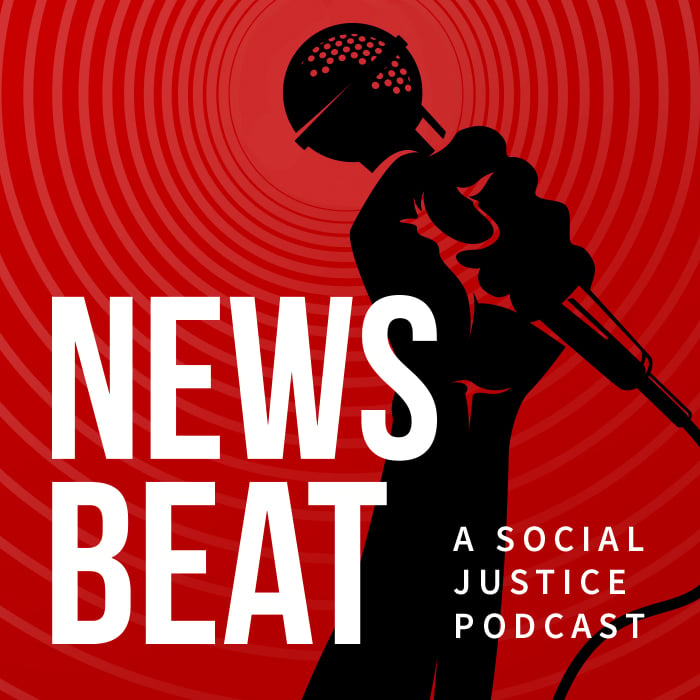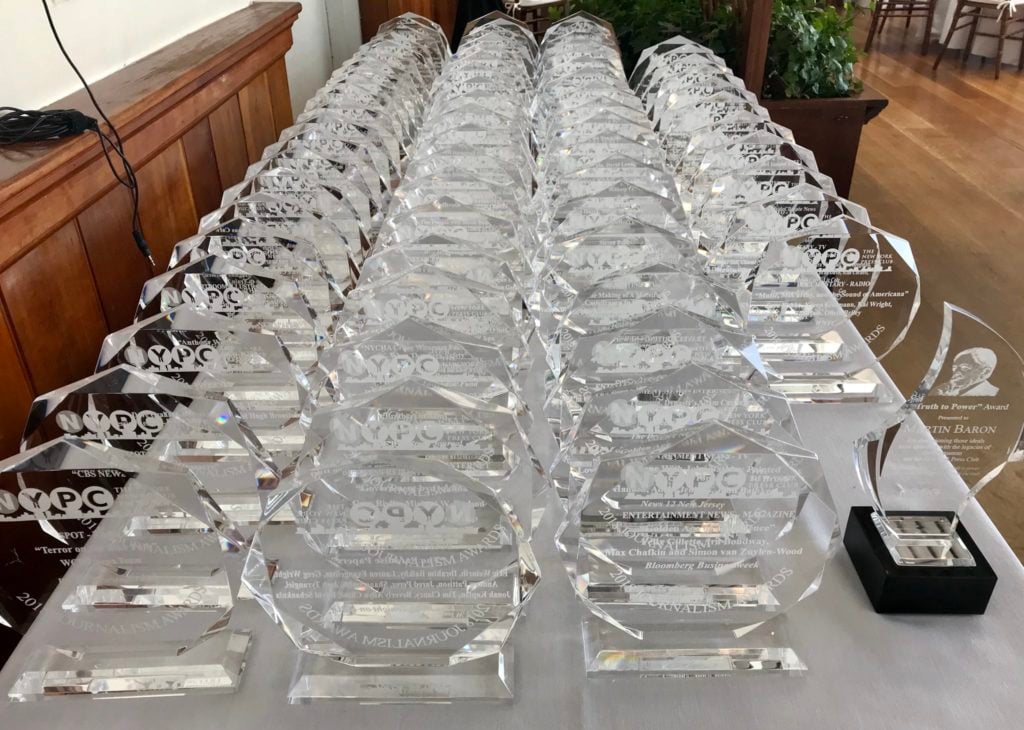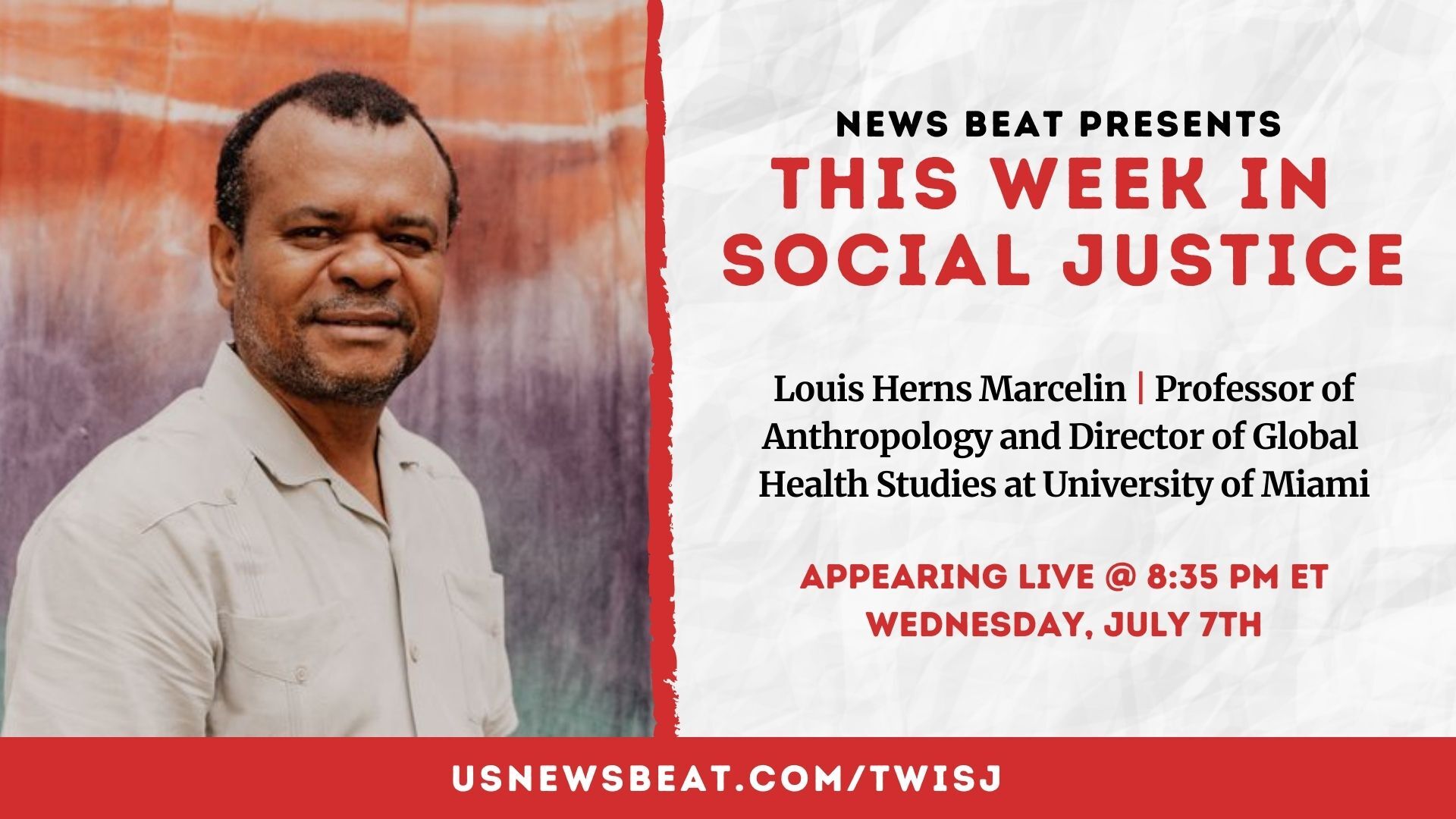This is a segment from our April 7, 2021 edition of This Week In Social Justice. Scroll down for the video or podcast version of the full stream.
A historic Black neighborhood in the Tremé neighborhood of New Orleans once boasted a thriving business district, affordable homes and environmental benefits.
But that all changed on Ash Wednesday in 1958 when demolition crews came in and started uprooting oak trees and razing homes to make way for an extension to the interstate highway along Claiborne Avenue.
All told, hundreds of homes and businesses were lost, along with the glorious oak trees that protected residents from the summer sun.
"That was the beginning of the end, so to speak, for what was a thriving place in New Orleans," Amy Stelly, a designer and board member of the New Orleans-based nonprofit Urban Conservancy, said on This Week In Social Justice. Stelly is also the co-founder of the Claiborne Avenue Alliance.
Don't ever miss the live show! It airs every Wednesday at 8 p.m. EST on Facebook, YouTube and Twitch. You can set reminders to receive alerts when we go live.
Stelly joined TWISJ, presented by News Beat podcast, to discus the interstate highway's impact on Claiborne, the surrounding community, and the environment. She also spoke about the need for racial equity in urban planning as the Biden administration promotes its $2 billion infrastructure plan, which appears to address some of the issues Stelly and other advocates nationwide say are necessary to revitalize divested communities.
Here are some takeaways from Stelly's appearance:
- Federal and local officials chose to build the highway along Claiborne Avenue because it had been declared a "slum," allowing the government to invoke eminent domain, which happened in the 1930s.
- Tremé, the neighborhood most impacted by construction of the interstate, is one of oldest African American communities in the United States.
- The economic hit on residents was particularly severe because Claiborne Avenue was a thriving business district frequented by Black Americans who primarily spent their money there during segregation.
- Destruction of the oak trees eliminated canopy cover that's necessary in urban environments to bring down temperatures. And the addition of more concrete exacerbates extreme heat, which contributes to the "heat island" effect prevalent in urban neighborhoods.
Below is a transcript of our conversation with Amy Stelly, which has been edited for clarity. You can watch This Week In Social Justice every Wednesday at 8 p.m. EST on various streaming sites and social channels. You can listen to This Week In Social Justice and our award-winning News Beat episodes on your favorite podcast app.
News Beat: Can you talk about the origins of the Claiborne Expressway and discuss its impact on the community?
Amy Stelly: The Claiborne Expressway was actually planned in 1945. And it was part of the interstate project that was the dream of President Dwight Eisenhower, he wanted to connect the cities in the United States with an interstate highway system. So the leaders of New Orleans decided that they would participate, and decided that Claiborne Avenue was a good place to plop down a piece of infrastructure. And there are a couple of reasons why they chose Claiborne. To begin with the Treme neighborhood, which is one of the oldest African American neighborhoods in the United States, had been declared 'slum' and the declaration of a neighborhood as a slum gave the government carte blanche to come in and practice things like eminent domain, which it did in Claiborne back in the 1930s. In the '20s, the city decided that Claiborne should be an entertainment district, because in New Orleans, we need entertainment.
So they begin acquiring property, they displaced people, razed houses in Tremé and actually built a municipal auditorium, which, oddly enough, became a beloved facility in the city because it hosted graduations and the circus and Mardi Gras balls and the whole nine yards. And at this point, that particular civic landmark is under consideration to move the current City Hall there, which I have to go on record as saying I'm vehemently opposed to because of some of the same reasons I don't want the Interstate. It's inappropriate for the neighborhood. It's gonna have all kinds of impacts and unforeseen circumstances that we don't want to entertain, but I want to move a little bit beyond that. So in the '60s, the day after Mardi Gras on Ash Wednesday, the federal government decided that they were going to come in and bulldoze a beautiful stand of oak trees and the pictures of Claiborne pre-interstate are pretty legendary. And they just really drove a heart through the community.
And in essence, they did, it's not in essence, they did destroy the economic heart of the Black community. And Claiborne was a thriving economic corridor because that is where Black people could shop during segregation. So during segregation and Jim Crow, we did not feel comfortable going on Canal Street, which was the primary retail corridor in the city at the time because we just weren't allowed, we weren't accepted. So Claiborne was where you could get everything you needed from dance gear to produce, you could take music lessons, dance lessons, bury your loved ones, it just offered a lot of goods and services to the community. So when Claiborne was eviscerated by the interstate, it really just destroyed a very thriving middle-class Black community and a retail district that served all of Black New Orleans."
NB: Was this the beginning of divestment for those residents of News Orleans?
AS: "Actually, it was the beginning of the divestment in the neighborhood. Slowly, but surely, the businesses started to close and fall off in places where heirs may have come in and taken over the business they chose not to. It really just totally changed the neighborhood and the environment, it changed the climate, too. But that was the beginning of the end, so to speak for what was a thriving place in New Orleans."
NB: Can you describe the environmental impact of the destruction of Claiborne?
AS: "Well, I can only assume what it was like back then. Because I don't have the experience that others had when Claiborne was fully treed. But I can tell you just based on my knowledge of the environment, that number one, it had to be cooler. Because now we have tons of concrete that exacerbate heat and exacerbate the the heat island effect. So we had that open space that was cooling, it was shaded. We did not have the pollutants that we have now. We did not have the emissions; even though we didn't have as many cars, we certainly didn't have all the additional cars and all the additional truck traffic that we're seeing as a result of the interstate. Also, we did not have the flooding problem that we have now. And the existence of the highway just exacerbate flooding because the highway hasn't been maintained in its lifetime by the city or the state or the federal government. So now it just doesn't drain anymore and it shoots hot water off of the deck, which exacerbates flooding and then the hot water goes into our drainage system, warm water, and then raises the temperature of Lake Pontchartrain, which is the drainage basin for the whole country.
So we're changing the ecology even though people can't put it together because one is not necessarily near the other and they don't see the water shooting into Lake Pontchartrain. But we're changing the ecology of the lake every time we send that hot polluted water through the city's drainage system into Lake Pontchartrain. So we have to really understand what these roadways do when they aren't maintained. [Commenting on an on-screen photo] That's one of my favorite pictures because that just cuts through a residential neighborhood which again is sad, you know, and imagine living there with all of that concrete, no trees, no cooling, no nothing. So these things are not environmentally friendly, right. They are strictly built for the convenience of cars. They are not built for people and they are harmful for people."
NB: The story of Claiborne has been renewed in response to the Biden administration's multi-billion-dollar infrastructure plan. And according to the White House, it includes '$20 billion for a new program that will reconnect neighborhoods cut off by historic investments' and ensure new projects are equitable. But how can this proposal, along with the work local organizations are doing, try to correct, if even possible, the injustice done to the community more than 50 years ago?
AS: That's a good question. Because really, you can't catch up. And as long as America continues on this road of thinking that Black and brown people and poor people don't need help, don't need a leg up, because you know, we're lazy, we don't go to school or whatever they attached to that racism. For as long as we're not willing to do that we're going to have these conditions. What the bill does is, in addition to providing for the reconnection of neighborhoods, it also provides for equity in other sections of the building. So there's a part for a community-led revitalization. And there is a provision for giving people access to capital. And these are all of the things that poor people, Black and brown people don't have. We typically don't have community-led revitalization. Number one, that takes skill, and it takes access to capital because you can't do land acquisition, you can't develop with nothing, right? And giving people access to capital, making sure that craftsmen are lifted up, which we need in New Orleans, because we have unique houses that take skilled craftsmen. So these provisions can set the table for us to then create programs that help to lift people and create equity. But that is not work that we can start when the interstate is down, we need to be doing that work now, not only in New Orleans, but in all cities, because equity has to come first, it cannot come last. So we can't have this as an afterthought. So I am very pleased to see that the Biden administration is thinking in terms of creating equitable places, particularly when these interstates come down and they do need to come down, they're not healthy."
NB: How can people learn about the Claiborne Avenue Alliance and get involved?
AS: "The easiest way to learn about the Claiborne Avenue Alliance is to go to our website. And there is a contact form within there. And if you just submit the contact form, I will respond to you. One thing that people can do is certainly encourage Louisiana legislators and our local politicians to walk with community. And that has been something that I've been asking our local leaders to do for over two years. So we need folks to help us encourage our leaders that this is a good thing. And this is what they should do. And of course, if you have friends and relatives in New Orleans, of course, we would love for you to talk this up and talk up the repair of not only Treme, but the Seventh Ward. And one of the pictures you showed where the two decks were going straight through and there was a real sharp perspectives shot that is in the Seventh Ward there. And it just took out houses, affordable housing, so we need to bring these things back. The other way that you can get involved, of course, is to support us with funding. And we're going to have to get a donate button on our website. But I've been doing this work for years with no pay. And the the deeper we get into the advocacy piece and getting it down, the more demanding this type of work comes.
"But if folks have ideas, they can certainly reach out, we certainly have to go through some studies to determine how this is going to come down. I've already spoken to some engineers who say that this can be dismantled piece by piece, you can do a block a week, which was really encouraging to me. But I'm certainly open to receiving professional assistance, legal assistance, anything that you can do to help us I'm open to hearing what folks have to offer and of course, that support, you know, continuing support on local, state, and federal levels because now that we've caught the eye of the president, we have to make sure that this keeps going, that cities like New Orleans don't fall off the radar. We are helping our fellow freeway fighters in other places. So if you know someone who wants to fight a freeway, then certainly get in touch. Because in Louisiana, we now have the four corners of the state covered with people who are either knowledgeable about doing this or people who are fighting this on the ground. And that's happening in other states, too."
Watch the full live stream
Listen to the full live stream



.jpg)





